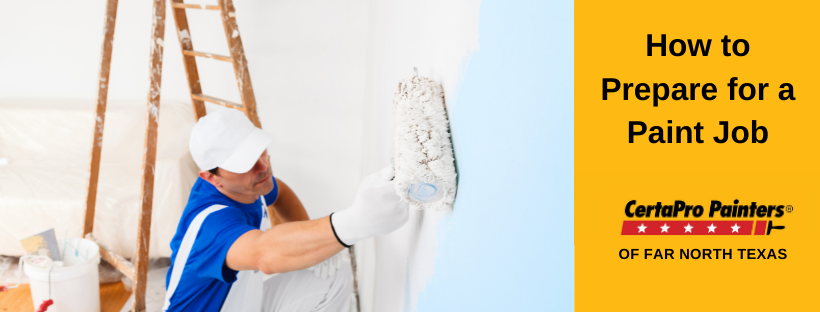
How to Prepare for a Paint Job
Posted on February 28, 2022
Preparing for a painting project may be the most time consuming part of the project. However, the quality of the preparation will equal the quality of the final product. The worst scenario is to apply expensive paint to a surface it is ill-prepared for, as chances are very good you will be painting the surface again Today we will discuss how the professionals prepare a surface for painting and why.
The Surface Must Be Clean
Cleaning a surface to be painted is not especially difficult, but it is easy to overlook. Visually, a wall may look ready for paint, but dust, oils, and other substances unfriendly to paint are often difficult to see without close inspection. The pros may change their approach depending on what they are painting, but generally they will use a damp painter’s rag and wipe any dust or debris using only water. Any materials remaining are scraped away with a drywall or putty knife and the process is repeated until the surface is clean and dry.
Preparation can include:
Removing Furniture
Removing Light Fixtures, Switch Covers and Outlet Covers
Installing Drop Cloths
Sanding
Remove Anything In the Way
There is no reason to try and paint around switch or outlet covers. Any of these can be removed with a screwdriver. The same goes for light fixture globes, curtains, or area rugs as painting around these objects is time consuming and may result in a blotchy job. When feasible, the pros will also remove furniture as well, but many times they simply lay down drop cloths.
Complete Any Repair Work
Any repair work, like filling in a crack or dent should be completed at this stage. Any sanding done may result in airborne dust, so it’s a good idea to wear a respirator. The pros tend to use spackling compound for smaller repairs as it dries quickly and minimizes sanding due to its fine texture.
Use Painter’s Tape or Petroleum Jelly to Mask
Using painter’s tape to mask off areas is common, especially where colors change, a wall meets a ceiling, or trim is present. However, painter’s tape will absorb moisture so a pro trick is to apply several thin coats when painting over painter’s tape. Overloading the brush or roller may result in soaking the tape, leading to runs.
Another pro trick is to apply petroleum jelly to window glazings, which is the glass part of a window. Latex paints are water based and will not stick to an oil based material like petroleum jelly. The pros simply wipe a little onto the glass, being careful not to get any on the grid or frame being painted. After the paint dries, the petroleum jelly can be easily wiped or scraped away.





